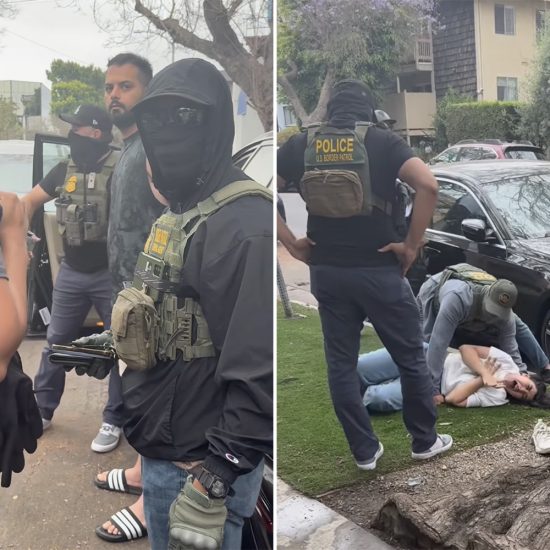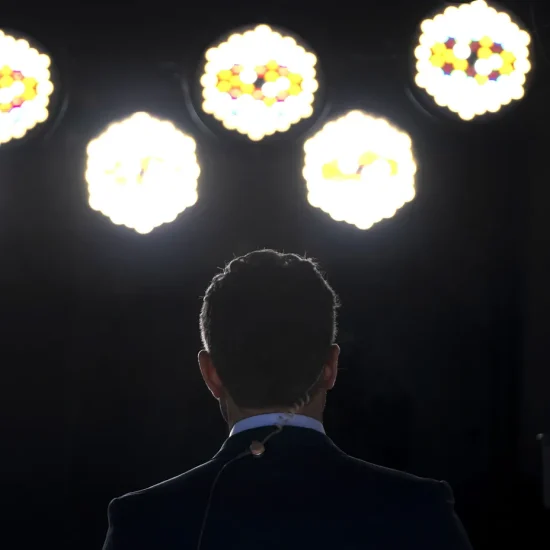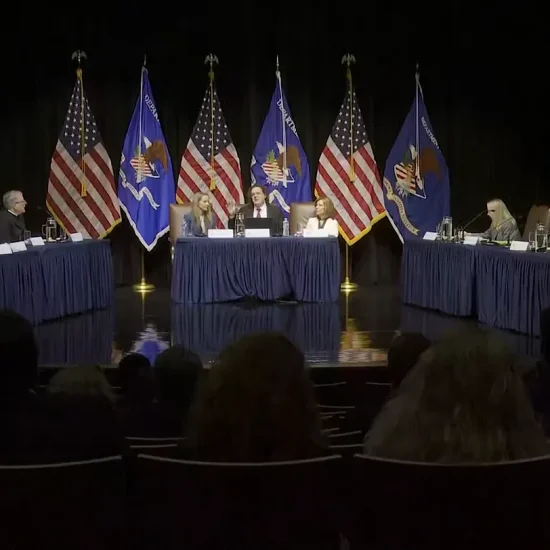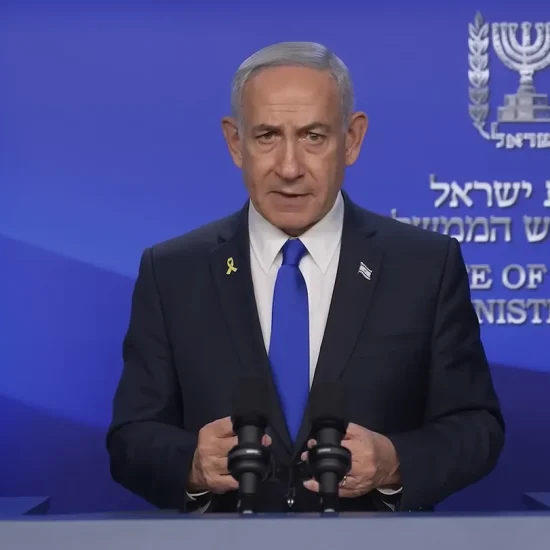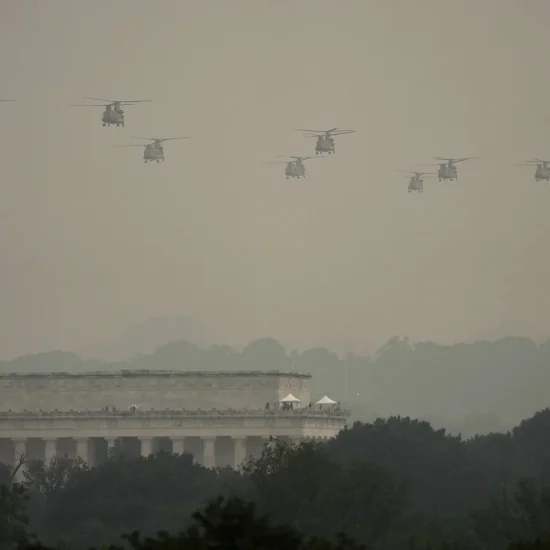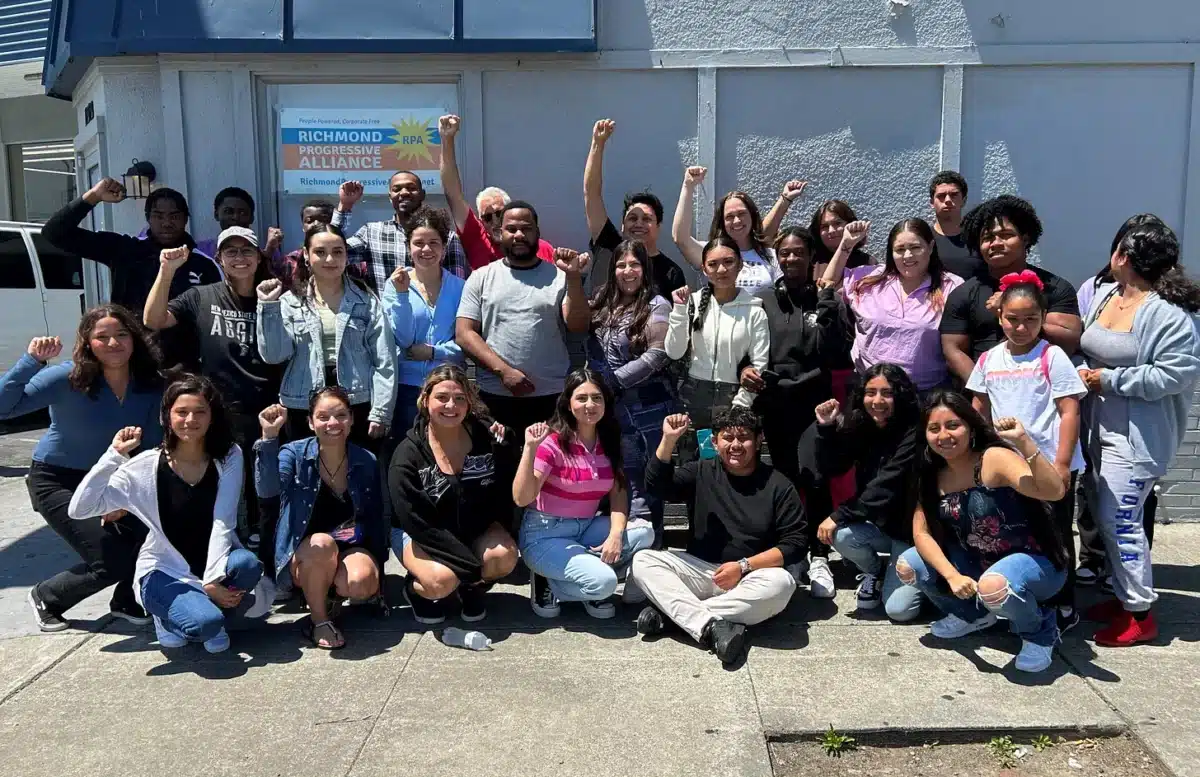
According to all the polls right now, we’re gearing up for a presidential election next year featuring an unpopular 81-year-old president against an even more unpopular (and indicted) 78-year-old former president. Meanwhile, the Senate majority leader is an 81-year-old man who last week froze during a news conference and had to be ushered away. Democratic Sen. Diane Feinstein, the oldest senator at 90, has also had multiple moments of confusion in the Capitol this year.
The average age of U.S. senators — 65.3 at the start of the year — is older than it’s ever been in U.S. history. Baby Boomers (born 1946-1964) make up 49% of Congress, and there are almost three times as many members over the age of 70 as there are under the age of 40. Just one member of Gen Z (born after 1996) is in Congress.
Throw in increased partisan polarization in Congress as the two parties each move further apart ideologically and you get a political environment that leaves a lot of younger Americans feeling apathetic or even cynical about politics and the possibilities for change. For instance, Millennials (born 1981-1996) are more disillusioned about democracy than older generations were at the same age.
So in that context, it’s surprising and even inspiring to meet younger people engaging in public advocacy with energy and hopefulness. But that’s what I found as I recently spoke with high school and college students participating in the new “Rising Youth” cohort program of Faith in Action.
“This year-long cohort aims to train and develop young people so that they can build their own campaign plan and within their churches or their educational systems they can organize and implement what they’re learning,” Yaquelin Valencia, a campaign manager at Faith in Action and the lead organizer with the Rising Youth cohort, told me. “We’re going to test this out. It is our first time having a youth training.”
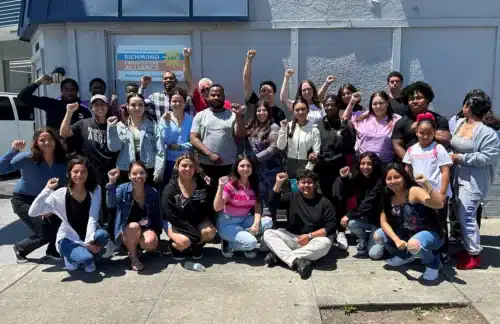
The Rising Youth cohort during a training session in Richmond, California, on July 21, 2023. (Faith in Action)
Formerly known as PICO National Network, Faith in Action is a national network of faith-based community organizations working to, as they put it, create “a society free of economic oppression, racism, and discrimination.” Founded by a Jesuit priest in 1972 in Oakland, California, the group and local chapters today engage in community organizing in 200 cities in 21 states. Faith in Action is currently led by Rev. Alvin Herring, an African Methodist Episcopal Church minister.
Now, Faith in Action is trying something new to add to their various faith-based advocacy strategies. This summer they launched their first Rising Youth cohort to bring together Gen Zers from across the country to receive training, inspiration, and encouragement needed to return back to their communities and lead organizing efforts. In addition to recent in-person gatherings in New Mexico and California, the group will continue to meet on Zoom over the next several months.
While our nation’s politicians squabble over just about everything — even on paying the bill for the expenses they already approved — and are holding onto power later in life, these young activists aren’t sitting by waiting for a future turn. They’re hitting the streets today to improve their communities and nation. So this issue of A Public Witness takes you inside the Rising Youth cohort to hear their dreams for more faithful politics.
Power to the People
With the Faith in Action inaugural Rising Youth cohort kicking off this summer, I joined organizer Valencia and three of the youth for an exclusive conversation on Zoom last week. They had all just returned home after spending a few days together in Richmond, California, for their second in-person training event. With the excitement of the retreat experience not yet worn off, the youth spoke with energy and enthusiasm, ready to change the world.
The cohort includes 34 youth, ranging in ages from 14-24 and coming from across the country. The three I spoke with were high school and college students from California, Massachusetts, and New York. We talked about what they’ve been learning at the start of the program and their hopes for the rest of the year-long process.
In the in-person training in California and New Mexico, they covered topics like understanding power, practical ways to engage in community organizing, use of art in social justice spaces, and current issues on key topics like immigration. Some local elected officials attended the training in Richmond, California, to talk about campaigns, local organizing, and the political climate. The politicians also took questions from the youth and spent quite a bit of time engaging with them, which Valencia said is already inspiring the youth to realize that when they go home they can set up meetings with their local officials like a mayor or city council members.
“Rising Youth so far has really helped me understand my power that I have,” said Ange Saucedo, a high school student in New York. “They really hope to let us know and teach us that we have power and that power isn’t just one person, power is a community.”
As a result of what she’s learned and the encouragement she’s received, Saucedo’s already started talking with friends to start their own group as she works to “bring back what I learned in these trainings to New York and implement it in my community.”
Similarly, Alpha Jean from Massachusetts emphasized how the trainings have helped him understand that he does actually have the power to act in his own community. He stressed his appreciation that Valencia and Faith in Action were leading this cohort “because they have taught us that we can make a change as young people.”
“To be honest, as a young person I didn’t really think I can make a difference in my community because I’m young. Usually the grownups make the change,” he said. “But as we came back, I felt like I was really empowered and very strong.”

The Rising Youth cohort during a training session in Richmond, California, on July 21, 2023. (Faith in Action)
Jean also mentioned canvassing with other youth and a minister during the training time in California. Two days before our conversation, the youth had gone out in teams of five in 96-degree heat to canvass a neighborhood, knocking on over 70 doors.
“I felt like it was very powerful because we went around the neighborhood and we were knocking on people’s doors, seeing what problems they had in their community, how they wanted to get help, what were stuff that was affecting them,” Jean explained.
He recalled a conversation with a man who talked about how he “felt his kids weren’t very safe on the street” because even though the posted speed limit was 25, many instead go 45-50. That real problem that needed addressing wouldn’t be obvious to an outsider but is understood by a local individual who might not feel they have the power to address it. Connecting his lived experience with an advocacy organization is key to improving the neighborhood — a lesson Jean and others in the cohort learned by helping make the connection through door-to-door work.
Valencia praised the youth for their hard work and their courage in canvassing, highlighting they had Black youth going to knock on doors — a thing that has led recently to someone being shot. Two of the youth shared about different negative encounters as someone came to the door angry at them. In one case, a man cursed at them and then a woman came to the door and said she had a gun. But as they processed the experiences, both youth tried to think empathetically about why people would lash out that way. And they stressed how it inspired them to do it at home because they overcame the negative reactions.
“I have never seen so much youth interested in our politics and community and organizing,” Saucedo said. “I just saw how everybody just came together. There was a lot of good and bad experiences when coming to canvassing, but I was just so impressed by how motivated we were to continue doing that in our own communities.”
“The powerfulness that I feel after each training, after each discussion we have just really makes me think I need to implement this in my community,” she added. “I just feel so much potential in myself that I feel like we all have. And that’s what made me feel powerful, that made me feel hope in our surrounding, hope in the youth to actually create a change.”
Tania Norzagaray, a college student in California, mentioned how the training and the cohort are helping them all recognize how they can make a difference — something she sees as particularly needed in this societal moment.
“Considering the contentious political climate that we’re in right now and all the regressive policies that have been made, I think we’re in a time right now where we’re realizing that us youth have power and that we need to use it,” Norzagaray said. “It’s absolutely important that we use it in order to make progressive differences because these policies really impact us and actually just do so much harm. And especially because this harm is directed at particular communities, like BIPOC [Black, Indigenous, People of Color] communities, queer communities, women.”
Get cutting-edge reporting and analysis in your inbox every week by subscribing today!
Faithful Advocacy
As with Faith in Action’s overall approach, the Rising Youth group isn’t just learning about politics and community organizing but also doing so with attention to faith communities, messages, and strategies.
“We have youth from different cultural backgrounds, different faith traditions,” Valencia, the cohort organizer, said. “But we were at a particular church in San Jose, California. And so youth are being introduced to other faith traditions, through faith reflections at the different convenings and events or just for the first time maybe even being in a different space that doesn’t look like their faith tradition. In New Mexico, for example, we were in a Catholic retreat center. And so for some of them, it was very different.”
“This is new for some of our youth to be in a multifaith space,” she added. “And that’s what the interactions really provide for the youth.”
The training program already has the youth thinking about their own spirituality. Saucedo emphasized the faith aspect as she’s working to implement what she’s learning in her own church community in New York. She noted her family is active in a Catholic church where her dad is a deacon.
“I see in our community that, although we all share the same religion, there is so much diversity that it sometimes causes division, like there’s a language barrier,” she explained as she noted conflicts between different ethnic groups. “I see so much division, and that’s not what Catholics stand for, that’s not what our religion is. What I’m learning here in Rising Youth, I see that I could bring it back at church.”
She also talked about her hope to help people “create a community and use all the diversity, all the beautiful food, all the beautiful languages, all the beautiful cultural stuff” instead of dividing between language and immigrant communities.
“Rising Youth has really made me realize how together we are so powerful, and how really a lot of people don’t understand that,” Saucedo added. “And I really want to bring that to my community, to my church because I know how much potential we have. And I really want to practice it, and I’m just so motivated because I feel so empowered whenever I leave one of the trainings that we have.”
Jean similarly mentioned already working to apply what he’s learning at his church where his dad is the youth leader. So Jean’s bringing the other youth together to set goals of what they can accomplish in addressing the housing crisis in their community. And he’s hopeful about what’s to come: “I feel like we’re going to make a very big change in our community.”

Art created during a Rising Youth training session in Las Cruces, New Mexico, on June 16, 2023. (Faith in Action)
Norzagaray noted that like many in her generation, she doesn’t affiliate with a particular religious tradition. Although she grew up Catholic, the college student said she is “not practicing right now for various reasons.”
“However, I am in the process of figuring out what spirituality means to me,” she said.
“One of the most impactful things that I learned was in conversations with other queer people that are part of the Rising Youth cohort,” Norzagaray added. “And so I asked them, ‘How did you reconcile religion, specifically Catholicism, with queerness?’ Because as we all know, religion has been used to exclude queer people and considering the political climate that we’re in right now that’s targeting LGBTQ people. And their answers were just so eye-opening and how they felt secure in their belief. They felt secure in their spirituality and that no one else could take that from them. So that’s helping me personally understand my relationship with spirituality.”
Beyond helping her think about her own spirituality, the Rising Youth program has helped her learn about faith-based advocacy and the potential for bringing positive change in her community and the nation.
“Religion has been used as a way of morally guiding people and organizing people. Like for example, in the civil rights movement. It was heavily based on Christianity, and Christianity has served as a moral compass for civil rights organizers to pursue these really monumental agendas,” she said as she reflected on what she’s been learning. “Religion has also been used in various international liberation movements around the world. And being in the Rising Youth cohort space with people of multifaith backgrounds has really helped me understand that about how religion can be used as a really good guiding moral compass in people’s lives and has been used to organize people to pursue these really good things for the communities.”
And while Norzagaray recognizes the “political disillusionment” and signs that “people are just fed up with electoral politics,” she’s hopeful from her experience in Rising Youth.
“One thing that I realized when we were like practicing to go canvassing is that for the most part people just want to be heard. That’s where organizing starts. You have to listen to people’s concerns. And even if they are disillusioned with electoral politics, it helps them to know that at least somebody is listening to their concerns,” she said. “Even if a few people are being positively benefited, then that’s a win. And we can gain these small wins and they can increment up into something larger. And so what gives me hope is community. I do this work, we all do this work for our community, no matter how small.”
In a climate of apathy and cynicism, in a time of polarization and gridlock, those small victories can indeed be a big deal. These youth aren’t running for president or the U.S. Senate (yet), but they’re hitting the pavement, knocking on doors, and gathering people together to change their communities. They are creating a better future today.
As a public witness,
Brian Kaylor

